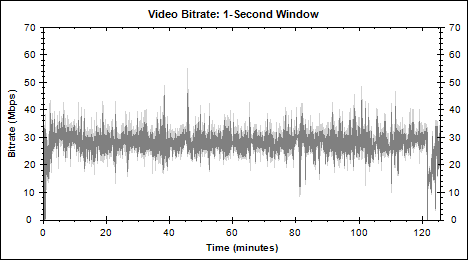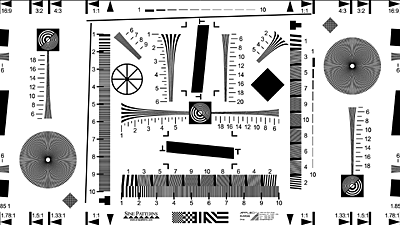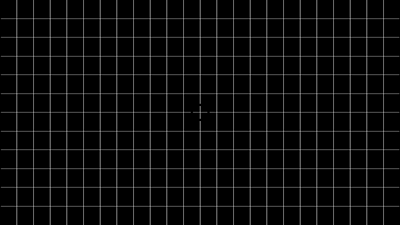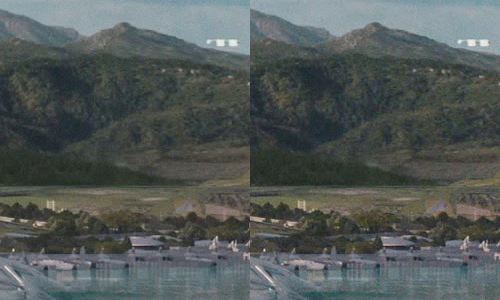Thanks to reader James from Sydney for lending me The Fifth Element on Blu-ray. It arrived in the mail this morning. Thanks also to Theng from Perth, who also offered to make it available.
The reason I wanted to examine the disc is because it has been alleged that the version made available in Australia by Sony Pictures Home Entertainment is a substandard version, earlier withdrawn from the US market in the face of complaints. The allegation appears here, for example, and here. The source for these claims appeared to be here.
This posts were brought to my attention by a person who had purchased this movie on Blu-ray in Australia, and was consequently concerned that he had a substandard version. I weighed into the thread, which starts here, in case you want to follow the whole thing through. My review of the Australian release of this movie on Blu-ray suggested that our version was very different to the original substandard US release.
In that review, I made a mistake. I assumed that the Australian version was the same as the remastered US version. So towards the end of the first page of the thread, I brilliantly muddied the waters by claiming that the US remaster does not have Dolby TrueHD sound, since the Australian version didn’t. I should have spent a couple of minutes checking trusted sites, because that would have shown that the US version does indeed have Dolby TrueHD (plus LPCM 5.1) for English, whereas the Australian version has Dolby Digital and LPCM sound for English.
Nonetheless, it was obvious that the Australian version was not the original shoddy US version for several reasons:
- the Australian version is a dual layer disc, the old US one was single layer;
- the Australian version is 35.70GB in size, the old US one was 22.81GB;
- the Australian version has an MPEG4 AVC video transfer, the old US one had MPEG2;
- the Australian version has four audio tracks: English and Spanish, each in both LPCM 5.1 and Dolby Digital 5.1; the old US one had three tracks: English in LPCM 5.1 and Dolby Digital 5.1, and French in Dolby Digital 5.1;
- the Australian version has its movie in file 00011.m2ts (35.3GB), the old US one had its movie in file 00001.m2ts (21.7GB)
- the Australian version has a ‘Fact Track’ as its only special feature, the old US one also had previews for Resident Evil: Apocalypse, and Underworld: Evolution.
Oh, and of course, the picture quality was obviously better in the Australian version!
But there was one problem with my analysis. The Australian version I was using was a ‘Testmold’ disc from the Sony DADC mastering centre. It was not an actual off-the-shelf Australian disc, but what Sony anticipated it would be. The theoretical possibility remained that Sony had ‘dumped’ the poor discs in the market, while advising me otherwise. I had already made one assumption too many. Thus my plea for the real thing.
Thanks to James, it is here. I can say already that it measures virtually the same as my Testmold. All the above points are identical. The only difference is that BDInfo 0.5.2 tells me that James’ purchased disc is 38,369,228,794 bytes in size, whereas my Testmold is 38,368,180,218 bytes in size. I’m not quite sure why yet. (Yet the plot thickens. Having just rescanned it, BDInfo now tells me that my Testmold is identical in size to the purchased disc! Same software, same drive, same computer. Just a couple of weeks apart.)
So identical are they that when I extracted the first 250 ‘I’ frames from each and compared them bit-by-bit, they were also identical.
You can identify the Australian release by the yellow ‘PG’ classification on the cover, by the barcode number 9 317731 044236 on the rear, and the disc code E-25275-BD printed on the disc’s label (it also appears on the box spine as BD25275).
So, in summary, there are at least three versions of The Fifth Element out on Blu-ray:
- the original single layer US version, released in 2006, with poor quality MPEG2 video and LPCM/Dolby Digital sound;
- the remastered dual layer US version, released in 2007, with high quality MPEG4 AVC video and LPCM/Dolby TrueHD sound; and
- the dual layer Australian version, released in 2008, with high quality MPEG4 AVC video and LPCM/Dolby Digital sound.
All three of these are Region Free.
I think it is highly likely that the video of the Australian version is identical to that of the US version. I hope to confirm this in the near future, since my brother has the US remaster and I can use this for a comparison. In the meantime, I note that the file sizes of the main movie in the US remaster (info taken from here) and the Australian version are very similar, with the differences being easily accounted for by the the different audio standards (and subtitles). I also note that this review of the US remaster contains a screen shot comparison just a few frames away from one of my own, and the differences are very similar to the differences shown by mine.
The only technical reason one might prefer the remastered US version to Australian version is that the Dolby TrueHD sound is claimed to 20 bit rather than the 16 bits of the LPCM (the former is apparently reported as being 24 bit by BDInfo). However, it is suggested here (first post, under the heading ‘Dolby TrueHD (lossless compression) 20-bit/48kHz’) — on what basis I do not know — that the 20 bits is a mere upconversion from 16 bits, which would accord with standard recording practices back in the late 90s when this movie was made.
So feel free to buy whichever one you want, confident in the knowledge that you will have an excellent rendition of the movie.
Be aware, though, that Sony Pictures Home Entertainment has recently sold the rights to this movie (to who I don’t know). When the retailer’s stocks are gone, you’ll have to hold out for the new company to release its version (of course, it might be the same as the Sony one, depending on what they’ve purchased from Sony).
And one final quirk in all this. According to this review of the US remaster, the only special extra on that disc is the fact track. Noticably not mentioned are the two previews that appeared on the original low quality Blu-ray disc. Now according to this BDInfo scan of the remastered US version, there are two other significant files on this disc. One is 2:29 in length, the other 2:21. As it happens, those are the lengths of the two previews on the original lousy disc. Furthermore, the file size of the longer one, reported as 348,463,104 bytes, is exactly the same as the file size of the Resident Evil: Apocalypse preview on the original lousy disc, while the file size of the other is very slightly (0.17%) larger than that of the other preview on the lousy disc.
Did that review overlook the previews? Or did Sony accidentally leave those files on the remaster, without any link to them? Those files are not on the Australian version.
UPDATE (Friday, 3 April 2009, 5:44 pm): For the past 4.5 hours BDInfo has been scanning the Australian Blu-ray release of The Fifth Element on my computer. This is the result:

The average bitrate for the movie, as reported by BDInfo, is 27,880kbps. That’s a rather higher than average bitrate for Blu-ray.
It is also the exact same bitrate as reported for the US version here (first post, under the heading ‘Dolby TrueHD (lossless compression) 20-bit/48kHz’, scroll to the right). It seems to me that this is getting very close to conclusively confirming that the video on the Australian version is the same encode of the same copy of the film, as used in the US remaster.
UPDATE 2 (Sunday, 5 April 2009, 10:10 pm): Exceedingly strong evidence that the video is identical between the Australian version and the US remaster is laid out above.







